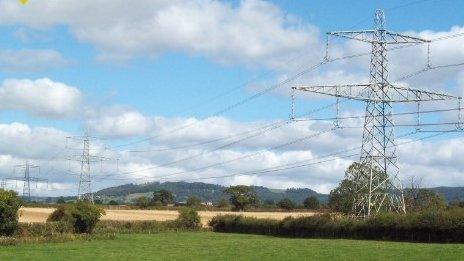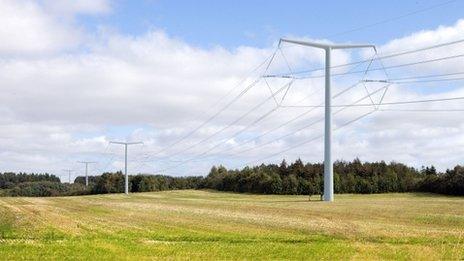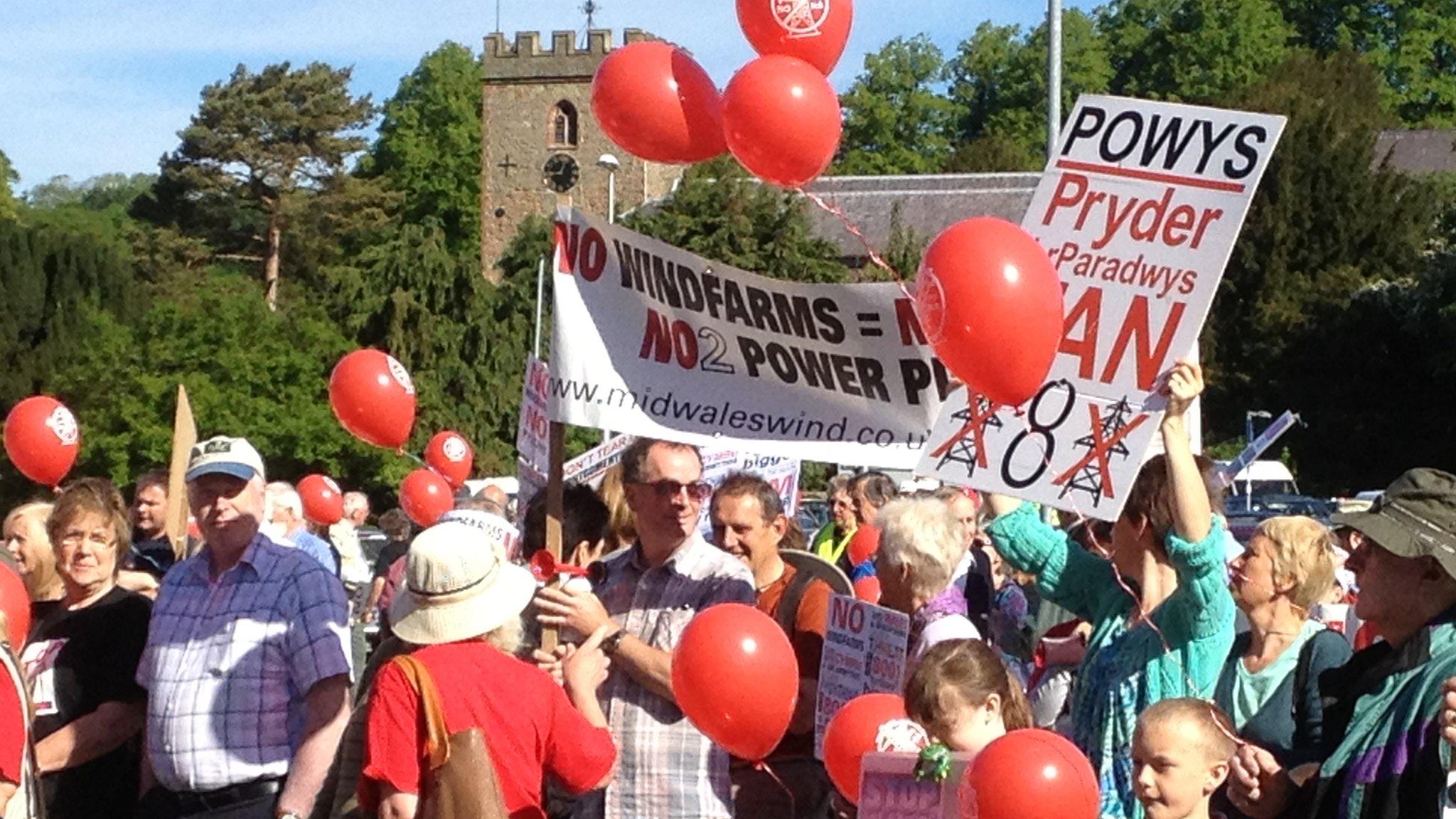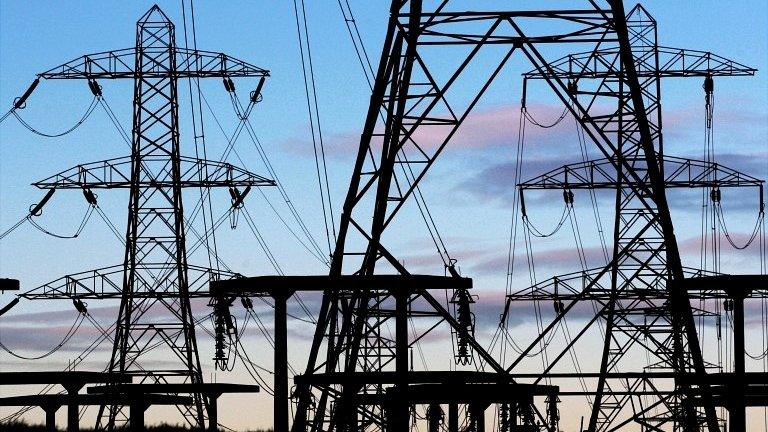Final say on route for £300m pylons for Powys wind farms
- Published
Plans for hundreds of turbines in Montgomeryshire have already faced opposition and a public inquiry
Communities are getting a final say on the route for a £300m network of pylons to link to new wind farms in Powys.
Plans for hundreds of turbines in Montgomeryshire have already faced opposition and a public inquiry.
A final decision has yet to be made by the Department of Energy (DoE).
But the National Grid (NG) needs to plan pylons in the meantime and is now consulting on where 30 miles (49 km) of power lines would go.
The pylon network would take more than two years to build and work could start by 2019.
The lines and a substation at Cefn Coch near Llanfair Caereinion, are needed to carry electricity from the turbines to the grid, if planning permission for the wind farms is eventually given.
Villagers in Llansanffraid ym Mechain in Powys are unhappy because they feel the pylon route is too close and could hit tourism.
Local community councillor Digby Davies wants more time given to the consultation as he said many holiday home owners will be away.
He said: "When you allow for the Christmas and the New Year break, NG have allowed for an eight week not a 12-week consultation."

THE POWER LINE ROUTE CORRIDOR
Click to view the proposed route - overland pylons in red and underground cable in green
Overhead lines would run from Cefn Coch to the start of the underground section over eight miles (13km) and involve 49 pylons
The underground cable section will see power lines buried for another eight miles (13km)
More overhead lines will run from the eastern end of the underground section to the Shropshire border - 23 pylons over 5.2 miles (8.4km)
The power lines then run into Shropshire for approximately 15km and involving 43 pylons.
Source: National Grid Mid Wales Connection, external

THE VISUAL IMPACT
Peter Ogden, from the Campaign for Protection of Rural Wales, said although the wind turbines could bring business on the one hand, they could also hit tourism on the other.
"The last 18 months has demonstrated how communities have come together and been galvanised. This is a special part of Wales they want to preserve," he said.
Chris Isaac, of NG said: "We know some people don't like what we're doing and we're trying to limit the effects of that.
"Putting the cable underground for eight miles - about a quarter of the route - is significant."

THE PYLON DESIGNS

This pylon is 35m high - 25% shorter than the usual design

Another pylon design is 38m tall which aims to reduce the impact on the landscape

It comes as traditional pylons like these in beauty spots like the Brecon Beacons could be reduced in size or cables buried
NG said it was proposing two low-height pylon designs to keep visual impact "as low as possible".
"We're really keen to hear people's thoughts on which pylon design they prefer and why," said Mid Wales Connection project manager Jeremy Lee.
NG said there was a "really big extra" cost of putting all the power lines underground, which would have to be passed onto customers.
- Published7 October 2013

- Published18 September 2013

- Published2 August 2012

- Published4 June 2013

- Published8 March 2011
- Published10 November 2014

- Published5 May 2011
